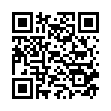|
This article is cited in 10 scientific papers (total in 10 papers)
Towards Unifying Structures in Higher Spin Gauge Symmetry
Anders K. H. Bengtsson
School of Engineering, University College of Borås, Allégatan 1, SE-50190 Borås, Sweden
Abstract:
This article is expository in nature, outlining some of the many still incompletely understood features of higher spin field theory. We are mainly considering higher spin gauge fields in their own right as free-standing theoretical constructs and not circumstances where they occur as part of another system. Considering the problem of introducing interactions among higher spin gauge fields, there has historically been two broad avenues of approach. One approach entails gauging a non-Abelian global symmetry algebra, in the process making it local. The other approach entails deforming an already local but Abelian gauge algebra, in the process making it non-Abelian. In cases where both avenues have been explored, such as for spin 1 and 2 gauge fields, the results agree (barring conceptual and technical issues) with Yang–Mills theory and Einstein gravity. In the case of an infinite tower of higher spin gauge fields, the first approach has been thoroughly developed and explored by M. Vasiliev, whereas the second approach, after having lain dormant for a long time, has received new attention by several authors lately. In the present paper we briefly review some aspects of the history of higher spin gauge fields as a backdrop to an attempt at comparing the gauging vs. deforming approaches. A common unifying structure of strongly homotopy Lie algebras underlying both approaches will be discussed. The modern deformation approach, using BRST-BV methods, will be described as far as it is developed at the present time. The first steps of a formulation in the categorical language of operads will be outlined. A few aspects of the subject that seems not to have been thoroughly investigated are pointed out.
Keywords:
higher spin; gauge field theory; BRST-BV methods.
Received: November 1, 2007; in final form January 25, 2008; Published online February 4, 2008
Citation:
Anders K. H. Bengtsson, “Towards Unifying Structures in Higher Spin Gauge Symmetry”, SIGMA, 4 (2008), 013, 23 pp.
Linking options:
https://www.mathnet.ru/eng/sigma266 https://www.mathnet.ru/eng/sigma/v4/p13
|

| Statistics & downloads: |
| Abstract page: | 294 | | Full-text PDF : | 49 | | References: | 61 |
|




 Contact us:
Contact us: Terms of Use
Terms of Use
 Registration to the website
Registration to the website Logotypes
Logotypes








 Citation in format
Citation in format 
